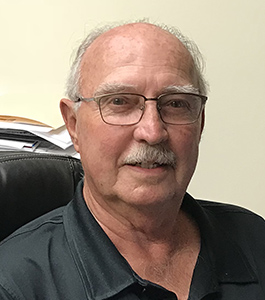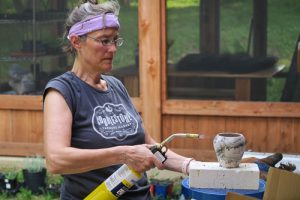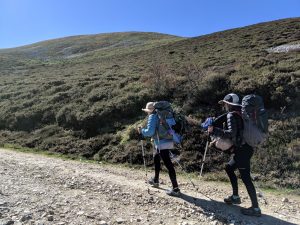
Chronic injuries are incredibly common for runners. These injuries occur over time due to a complex web of factors. Here are 3 things you need to know about running injuries.
1. Common Injuries
There are a multitude of injuries you can experience as a runner, but just a handful comprise the vast majority of all injuries. Here is a brief overview of the most common running injuries.
PFPS
Runner’s knee, officially called Patellofemoral pain syndrome (PFPS), is an injury where knee pain recurs, particularly after extensive periods of sitting, altitude descent, and long runs.
Achilles tendonitis
Achilles tendonitis is an injury below the calf that occurs when the Achilles tendon becomes overstressed and irritated. Symptoms often include swelling or a dull pain above your heel that may recede after icing or rest.
Hamstring problems
Having tight, weak, or painful hamstrings is a common injury type that can slow down your pace and shorten your strides. Symptoms of hamstring problems often occur while running hills or running with higher speeds.
Plantar Fasciitis
Plantar Fasciitis is an injury in which the tendons and ligaments on the bottom of the foot running between heel and toes become inflamed. Pain from plantar fasciitis is typically worst before the ligaments and tendons are warmed up, like first thing in the morning or at the beginning of a run.
Shinsplints
Shinsplints is a term given to medial tibial stress syndrome, where muscles around the tibia experience small tears. Tender or aching pain often accompanies runs but may go away afterwards.
ITBS
The iliotibial (IT) band, which extends from the outer thigh to the outer knee, rubs along the femur during running. Iliotibial Band Syntrom (ITBS) occurs when irritation develops from this, and symptoms often occur a few minutes into a run but disappear after.
Stress Fractures
Stress fractures occur due to cumulative strain on a bone, commonly on the shins, heels, and feet. Pain often builds during a run and continues even when walking or being on your feet.
2. Preventing Running Injuries
Injury prevention is a key part of healthy and sustainable running. Here are a few aspects of running you can focus on to help prevent injuries.
Cadence
Many of the key ways to prevent chronic running injuries relate to running form. One important aspect of form is cadence. Cadence is a measurement of your strides per minute. An optimal cadence is generally thought to be 170 or higher, but can vary person to person. There is some evidence to suggest a higher cadence can improve overall running form and therefore reduce injury rate. A higher cadence tends to help the body become more biomechanically efficient.
One part of that efficiency is having a shorter stride, which reduces the force of impact when the foot hits the ground. Additionally, when feet strike closer to the midfoot and are more centered, as opposed to heel striking or striking on the outer foot, injury rates are reduced and efficiency is increased.
Periodization
Another key to injury prevention over time is periodization. Periodization entails planning an exercise schedule in periods of time or cycles to reach a specific goal or set of goals. Workout frequencies, types, lengths, and intensities are varied according to the goals of a period. Not only does this allow optimal preparation for performance, it also can help prevent injury.
For instance, when training for a race, a periodized plan might take place over 12-16 weeks and have gradual buildups, plateaus, dips, and descents in terms of mileage and intensity. Varied workout types like high intensity interval training, long runs, recovery runs, cross-training, strength training, and rest days might be spread throughout each week. After a race, a periodized plan might include several weeks of lower mileage and more frequent rest days, before adapting to meet another set of goals over several weeks or months..
Periodized training can help structure gradual increases in mileage over several months, which is extremely important for injury prevention. Adding too many miles too quickly is a very common way to develop injuries. Generally, you should not increase your weekly mileage by more than 10% at a time, and you should include periods of slower increases, plateauing, and tapering.
Overall, periodization is an important way to think about training to optimize performance and prevent overuse injuries.
Cross-training
Cross-training, or training with other forms of exercise, is another powerful tool for injury prevention. Cycling, swimming, core exercises, stretching, and strength training are key ingredients to a healthy running schedule. These activities can help you develop the stability and flexibility needed to sustain training in a healthy and optimized way.
Listening to your body
As simple as it may seem, being mindful of how your body feels during running and responding accordingly is a powerful way to prevent injuries from developing or worsening. By using pain as a guide to how and when you run, you can avoid chronic injuries. Have a flexible approach to training- your body will thank you for it!
3. Recovering From Injuries
If you do develop an injury, it is critical to assess the severity and treat your body accordingly. In general, rest, ice, and anti-inflammatory medications are a good start for dealing with symptoms in the short term. Additionally, it’s important to seek professional medical advice to develop a plan for healing. Physical therapists can help you with your healing process, and can help you develop more sustainable and healthy practices so you won’t become injured again in the future. Sometimes, surgery might be the best option to help you heal.
For more information on running injury treatment and surgery, please contact Dr. Stacie Grossfeld and the Orthopaedic Specialists at 502-212-2663.














Recent Comments